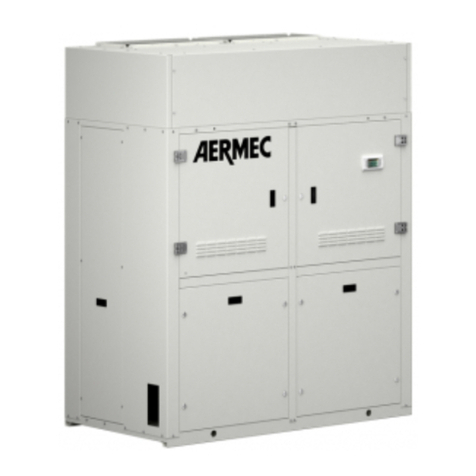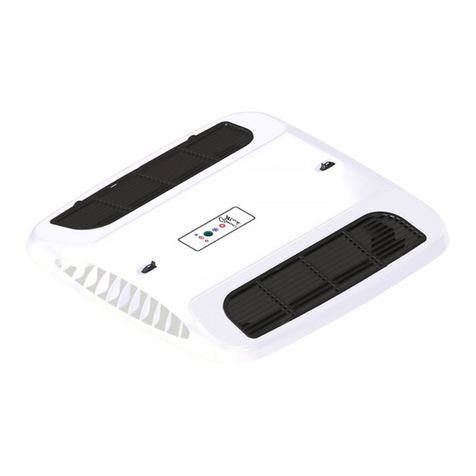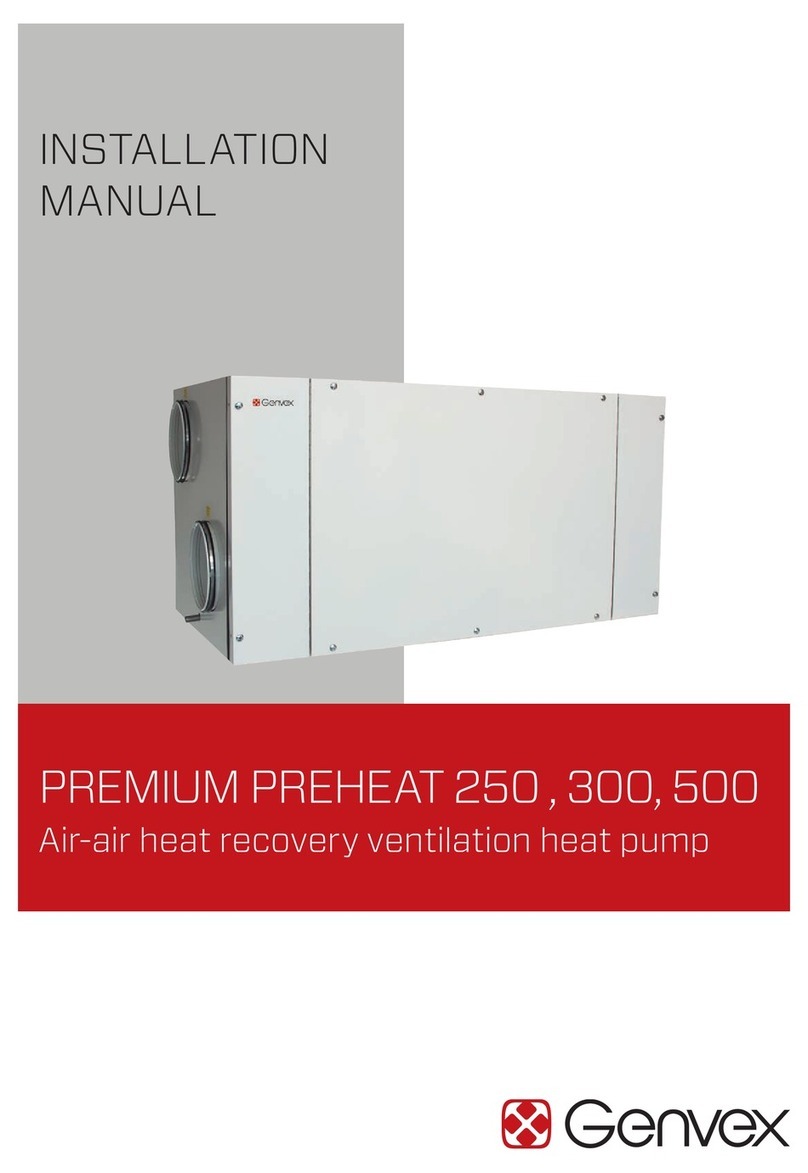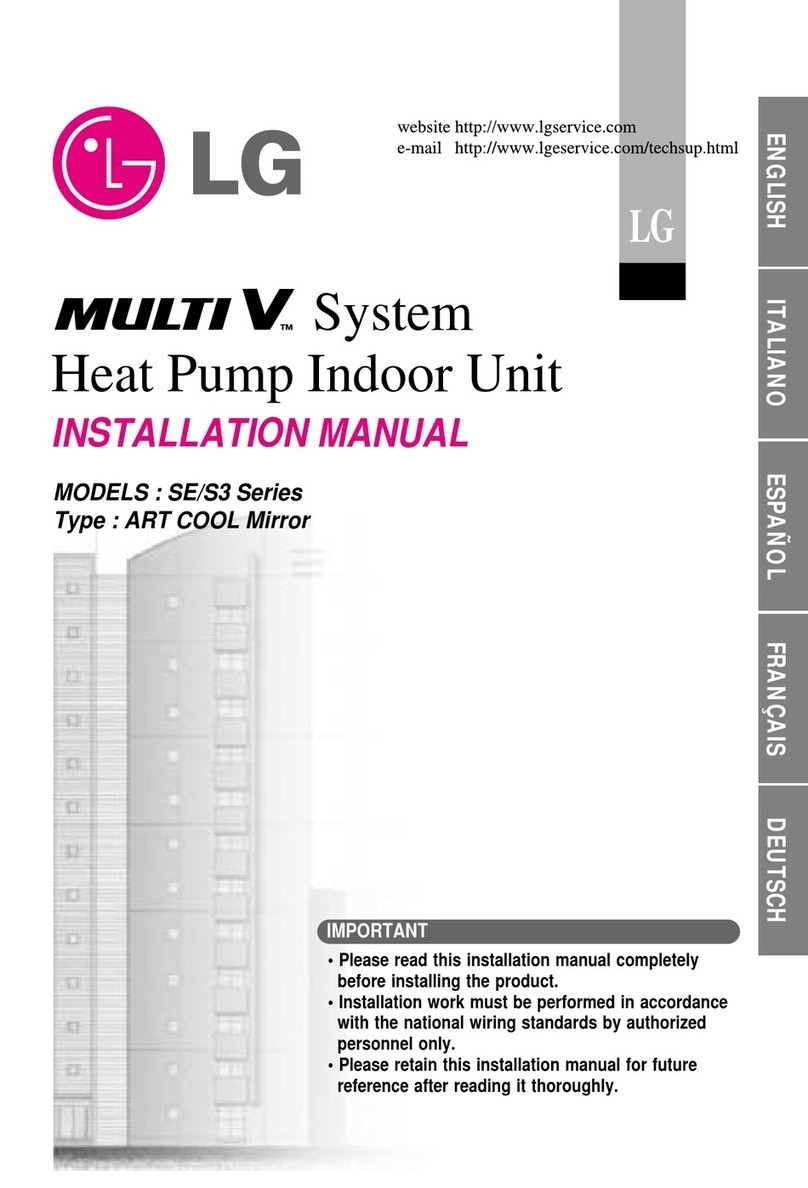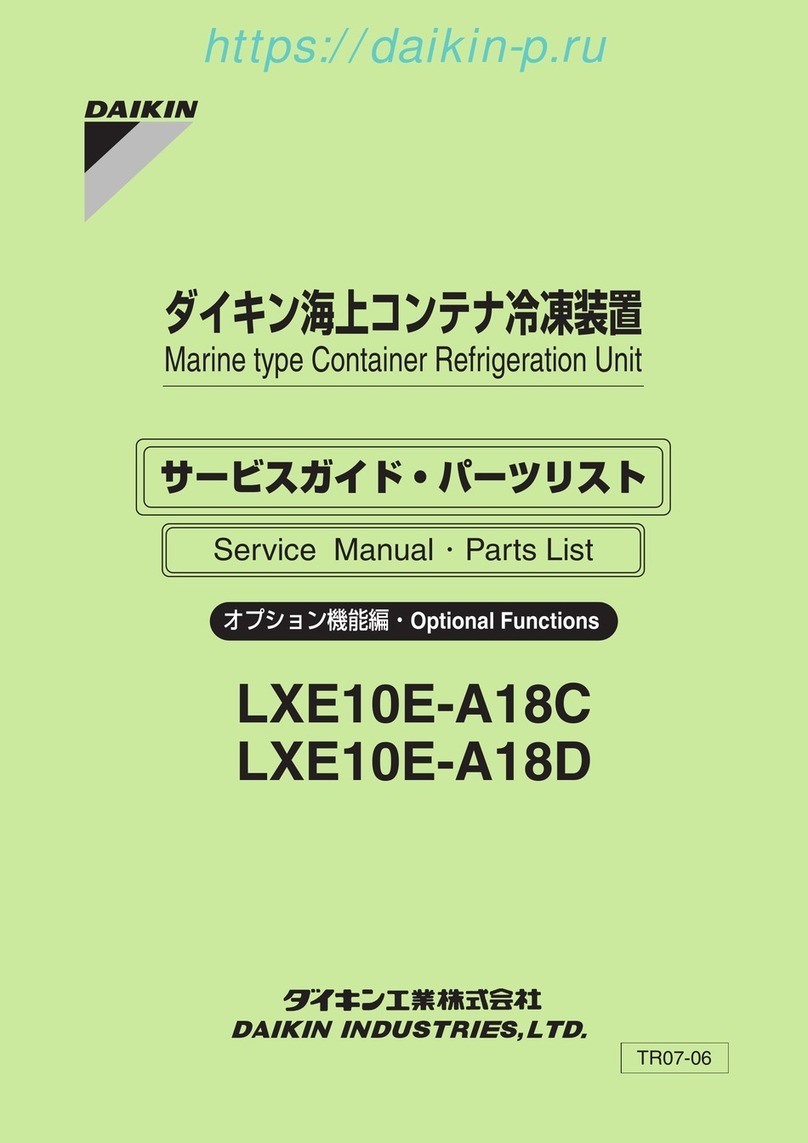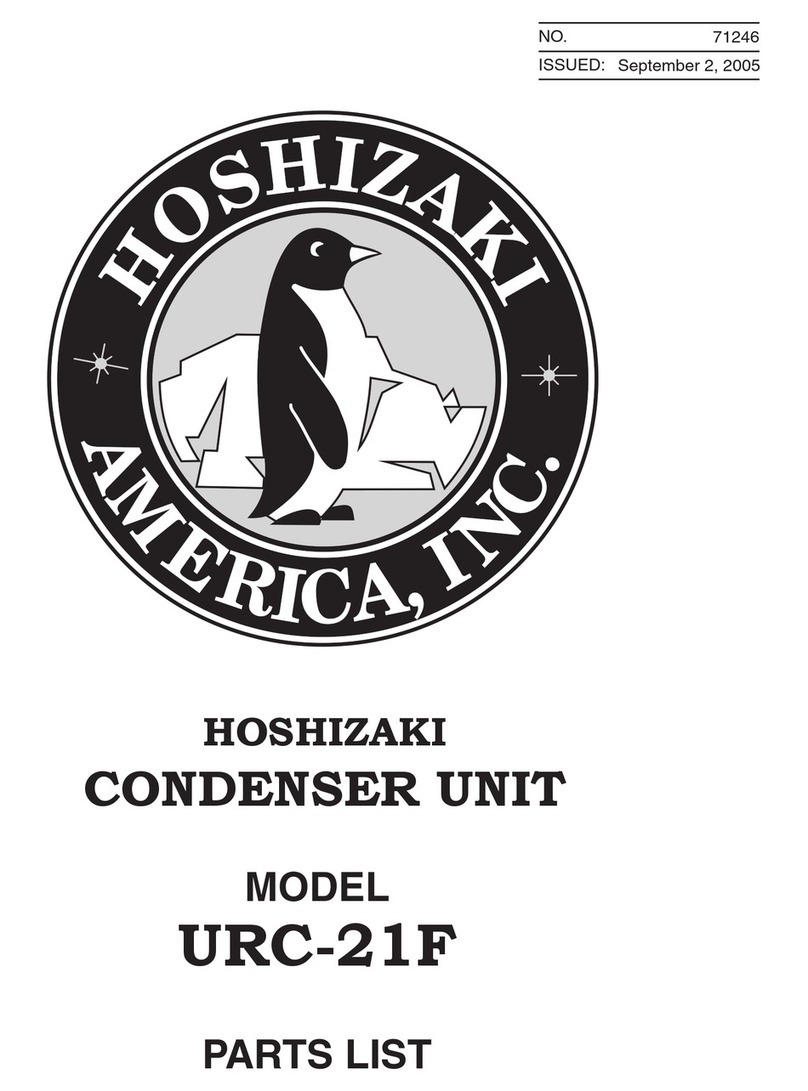
7
The label shall be dated and signed. Ensure that there are labels on the equipment stating the
equipment contains flammable refrigerant.
16) Recovery
When removing refrigerants from a system, either for servicing or decommissioning, it is
recommended good practice that all refrigerants are removed safely. When transferring
refrigerant into cylinders, ensure that only appropriate refrigerant recovery cylinders are
employed. Ensure that the correct number of cylinders for holding the total system charge is
available. All cylinders to be used are designated for the recovered refrigerant and labeled for that
refrigerant (i.e. special cylinders for the recovery of refrigerant). Cylinders shall be complete with
a pressure relief valve and associated shut-off valves in good working order. Empty recovery
cylinders are evacuated and, if possible, cooled before recovery occurs. The recovery equipment
shall be in good working order with a set of instructions concerning the equipment that is at hand
and shall be suitable for the recovery of flammable refrigerants. In addition, a set of calibrated
weighing scales shall be available and in good working order. Hoses shall be complete with leak-
free disconnect couplings and in good condition. Before using the recovery machine, check that
it is in satisfactory working order, has been properly maintained, and that any associated electrical
components are sealed to prevent ignition in the event of a refrigerant release. Consulting
manufacturer if in doubt.
The recovered refrigerant shall be returned to the refrigerant supplier in the correct recovery
cylinder, and the relevant Waste Transfer Note arranged. Do not mix refrigerants in recovery units
and especially not in cylinders. If compressors or compressor oils are to be removed, ensure that
they have been evacuated to an acceptable level to make certain that flammable refrigerant does
not remain within the lubricant. The evacuation process shall be carried out prior to returning the
compressor to the suppliers. Only electric heating to the compressor body shall be employed to
accelerate this process. When oil is drained from a system, it shall be carried out safely.
4. Other Safety
Thank you for choosing a heat pump. This is a heat pump capable of providing the ideal comfort for
your home, always with a suitable hydraulic installation. The unit is an air source heat pump for
space heating/cooling and a sanitary water heater for houses, apartment blocks, and small industrial
premises. Outdoor air is used as a heat source creating free energy to heat your home.
This manual forms an essential part of the product and it must be given to the user. Read the
warnings and recommendations in the manual carefully, as they contain important information on
the safety, use, and maintenance of the installation.
This heat pump must be installed by qualified personnel only, in accordance with the legislation in
force and following the manufacturer’s instructions.
The start-up of this heat pump and any maintenance operations must be carried only by qualified
personnel only.
Incorrect installation of this heat pump could result in damage to people, animals or property, and
the manufacturer will not be held liable in such cases.
The following safety precautions should always be taken into account:
1) Be sure to read the following WARNING before installing the unit.
2) Be sure to observe the cautions specified here as they include important items related to safety.
3) After reading these instructions, be sure to keep them in a handy place for future reference.
4) Equipment shall contain the following identification:
Inflammable “ ” Read Carefully “ ” Professional Recycling “ “




















